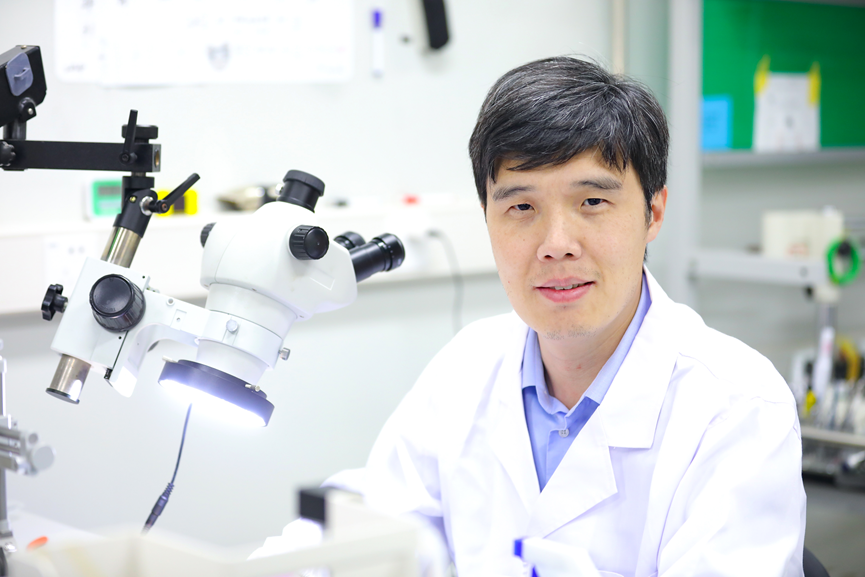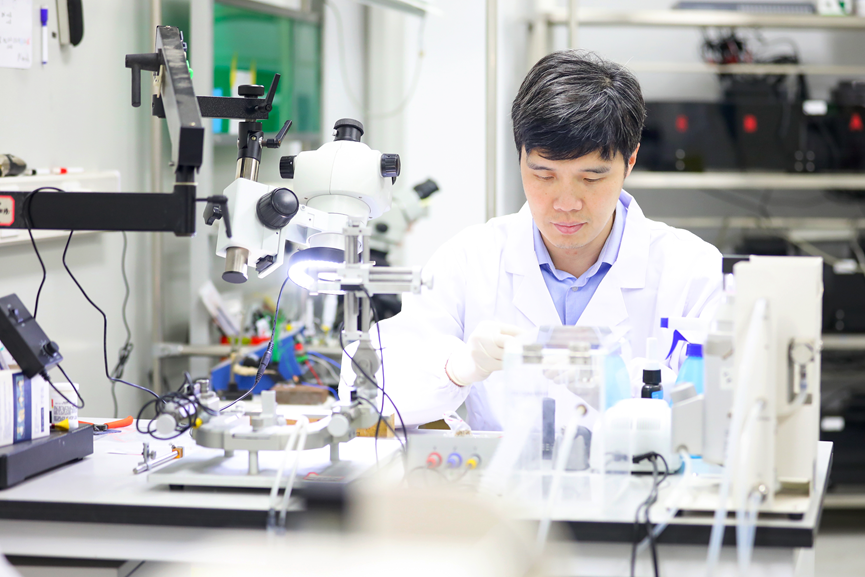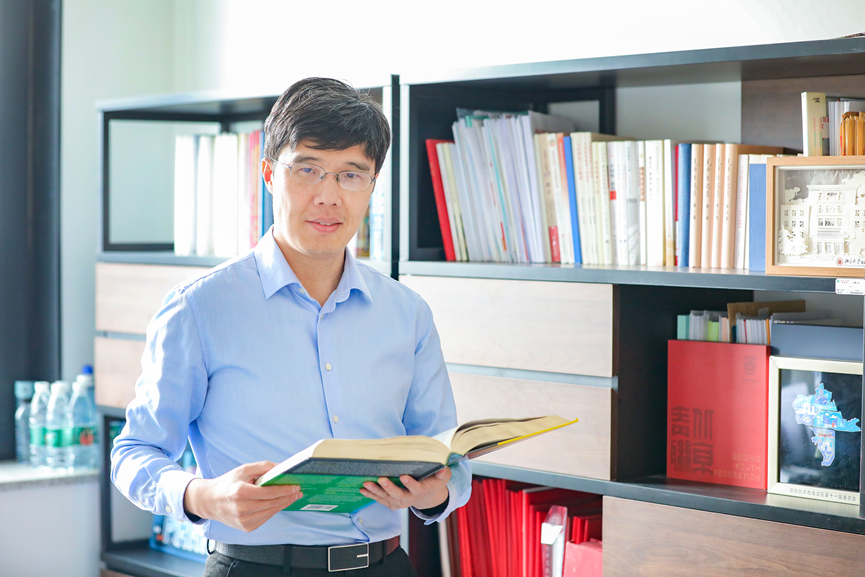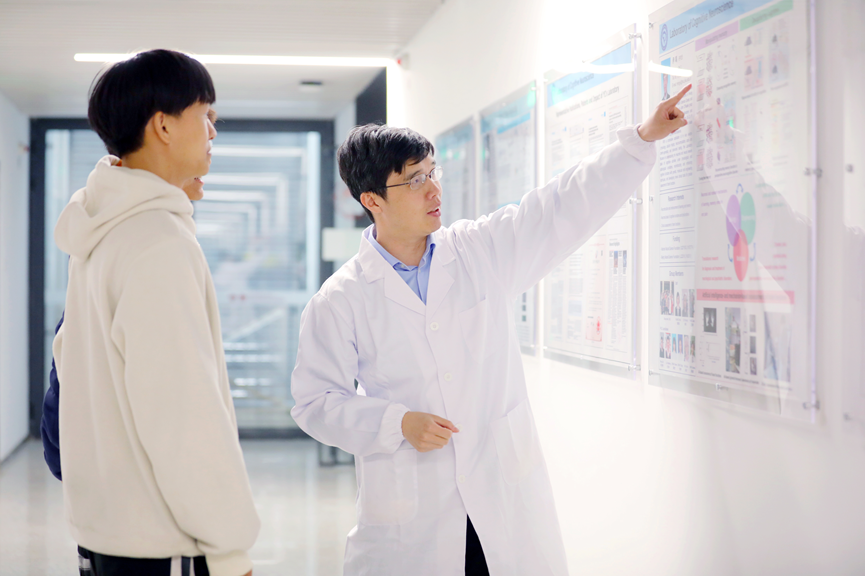Peking University, May 30, 2024: Yi Ming, a neuroscientist at Peking University Health Science Center (PKUHSC), was shuttling between his office and lab when we met on a foggy afternoon in late March. His solicitous and expressive vibe, discernible in the first few minutes of our conversation, resembled more that of a host than an interviewee.
As we spoke, Yi gestured towards an aging complex overlooked by the sleek Medical Science & Technology Building we were standing in. "The Central Laboratory (built in the late 1980s) used to be the tallest building, a constellation of the most advanced labs at the Center," he recalled, "However, its interior had become very poor and cramped by 2009," the year when Yi returned to the Center as a researcher. "Yet, to me, it feels like a heritage. It's the place where I sorted out my research direction."
The Medical Science & Technology Building (File photo)
The painstaking research
Yi's research orbits the pathological spectrum of memory disorders, from the gradual erosion of "good" memories like Alzheimer's disease (AD), to the painful persistence of bad ones – "nightmares that keep flashing back" – such as post-traumatic stress disorder (PTSD).
Chronic pain, which for many sounds more like a physical ailment than a psychological/neurological condition, also constitutes a huge part of Yi's work. According to Yi, chronic pain is, in essence, a memory disorder, in which a patient's episodes of suffering won't dissipate as short-term ache does. "Imagine that you've experienced an injury and the feeling of pain, which is normal enough, should disappear with recovery. But when the trauma escalates into something chronic, it sticks in your head, so much so that it can disrupt your life, becoming 'unforgettable'," Yi explained to me.
The study of chronic pain – including its definition, classification, causes, diagnosis, and treatment – is as foggy and intricate as the syndrome itself. Traditionally, chronic pain was viewed as a symptom (rather than a disease) and was treated as such, coinciding with the surge of painkiller consumption globally in recent decades, according to WHO data. Against this trend, Yi was among the first batch of scientists who proposed chronic pain as a nociceptive memory (one that relates to the perception or sensation of pain), analyzing the condition as a "malfunction" of our brain – a form of memory disorder.
In a 2011 article appeared in The Journal of Neuroscience, he wrote, "Chronic pain persists after an injury has healed and results from significant functional and structural changes in the nervous system similar to memory processes." With limited literature available, Yi delved into the uncharted territory of researching chronic pain as a nociceptive memory.
It was Yi's innovative research to silence “painful” and "unforgettable" memories in animal experiments that put him in the spotlight, endowing him with unexpected fame (and controversy). In March 2020, Yi and collaborators published their findings of an animal experiment in Science Advances, in which they deployed the CRISPR-SaCas9 system, a commonly used gene-editing tool, to inactivate a target gene in the rat brain that is “relevant to the animal's fear memory."
The paper soon generated a public frenzy. Many linked the experiment with memory erasure (Yi disclosed that he'd received a flood of emails from patients inquiring about "erasing" their painful memories.); one English newspaper slammed it as "meddling with memory," while some in hindsight related it with Elon Musk's Neuralink.
When the episode was brought up during the interview, Yi told me that the notion of "erasing memories" was "easy to understand for the public" but inaccurate, because genetically erasing human memories, which the term might evoke among ordinary people, is unethical, warned Yi, who instead encapsulated his animal research as the “precise manipulation of memory.” (Similar research had been conducted, with varied approaches, to tap into gene therapy for chronic pain relief.) The core of that experiment, Yi said, was understanding the mechanism of fear memory (why it lingers) and the possibilities for developing a palliative – a drug or medical device – that can ease traumatic memories or chronic pain.
Yi further explained that such adventurous animal experiments “act as the bridge,” cutting a new path to the treatment of chronic pain, which afflicts one in five people globally, according to statistics. “Chronic pain meds almost all have side effects, as they interfere with the whole brain, instead of a specific region or function,” added Yi, who envisioned a treatment that could be “preciously” administered to certain parts of the brain, with minimum collateral damage.
Despite public fever and doubts, Yi remained patient and optimistic about his painstaking research. He understood that the journey from numerous experiments to a single clinical trial and, eventually, to the commercialization of a drug or device could be lengthy, as chronic as pain can be.
Drawing from his research, including the "much-hyped" 2020 rat experiment, Yi is working on a new way to treat PTSD patients, with an old medicine. "By exploring innovative ideas, we aim to suppress negative memories, blocking them from expression and paralyzing (patients’) lives," he said, "and the efficacy (of the medicine in clinic trials) was pretty good." A medical device to remotely diagnose infant brain damage is also under development by Yi's team, which shows huge promise for hospitals with limited resources.
Yi Ming in his office
The ultimate choice
Yi faced the very first of many career-shaping quandaries at the age of 14. It was the summer of 1997, and Yi, much younger than his peers at school, was applying for college. Back then, the application process was dated before the college entrance exam, or gaokao, and Yi's parents recommended that he study clinical medicine.
"But at that time, biology really caught my interest," Yi recollected, "My parents' reasoning wasn't that they wanted me to become a doctor, but that (by choosing clinical medicine) I could have more choices after graduation — I could be a doctor, or I could dive into biological or medical research." Yi followed the advice and was enrolled at Beijing Medical University, the forerunner of PKUHSC.
Looking back some 26 years later, Yi reflected, "That choice has to a significant extent defined what I'm working on. My current research is perhaps having a bigger impact on society and human health overall." "For this reason, I'm grateful to my parents, because the choice (their choice) renders me a completely different perspective from that of a biologist me."
Besides what he would study, Yi also made a bold decision on how he would study. Yi didn’t opt for the popular seven/eight-year BS + MD programs; instead, he chose a five-year one. “Many were like, ‘Why wouldn’t you study a combined program (with an accelerated timeline)?’” he said, “But I knew that my passion awaited me (somewhere in the future), and I just needed to find it out earlier.”
Yi's undergraduate years, which started on the same day as his 15th birthday, were split into two parts. The first two-plus years, Yi said, were more of a one-way knowledge “instillment” process. “The curriculum was full to bursting, with large classes, experiments, and practicums — not quite like the vibrant teaching we now have at the Center, which offers an array of interactive sessions, seminars, and the Problem-based Learning (PBL) model,” he said.
"To be honest, I wasn’t satisfied with the way I was taught," Yi added, “and as you might find out through my report card, my academic performance slipped from the top tier to average in my third year.”
Yi’s both overwhelming and underwhelming undergraduate studies, it turned out, inspired and nudged him to explore more (and later greatly influenced the way he would teach at the Center). Extracurricularly, Yi engrossed himself in research papers about his interests and began drafting literature reviews and summaries, a practice that is common now but was quite rare back then among undergrads. “I was probing into subjects and fields I liked--all by myself,” he said, “without anyone prompting me to do so.”
It was during this period Yi confirmed that scientific research was his true aspiration and zoomed in on his province – the science of the brain (neuroscience), and, specifically, higher functions of the brain (memories, emotions, etc.).
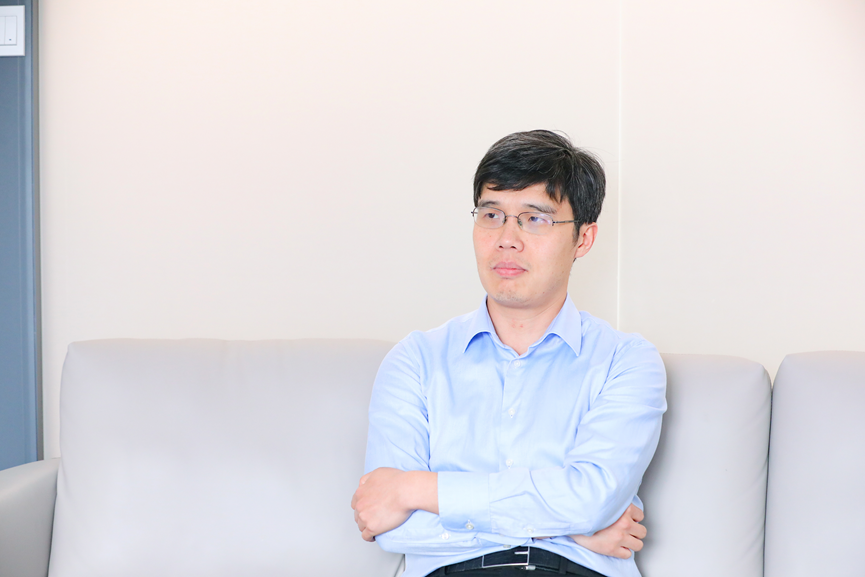
On shoulder of a giant
Yi Ming later pursued graduate studies at University College London (UCL). "UCL wasn't as well-known in China as Oxford and Cambridge ... but it was my top choice, as it was the best place to study neuroscience," Yi said, explaining his decision-making.
During our conversation, Yi also mentioned his month-long effort to “single out” his supervisor. (The experience was actually a two-way process.) “If I recall correctly, UCL then had some 100 professors of neuroscience, and I leafed through an average of four papers by each professor,” Yi told me, “Within a month, I dipped into at least 400 articles.”
In “a sea of” professors and their papers, Yi gravitated towards Prof. John O'Keefe, the 2014 Nobel laureate for Physiology or Medicine, and his research in spatial memory. Yi was particularly intrigued to O'Keefe’s electrophysiological approach, “which involves recording the electrical activity of single neurons,” explained Yi.
In his five and a half years of studies and research at the O'Keefe Lab, Yi was consistently impressed by his supervisor, and he remains so after receiving his Ph.D. degree from UCL in 2009. Yi deemed O'Keefe as “the best of the best in his field.” “I could use many words to describe him, ... but what stands out the most to me are his 'one-of-a-kind' viewpoints. Even now, I'm still curious about his way of thinking,” he said.
O'Keefe’s astounding viewpoints, Yi highlighted, could be best exemplified by a 1996 paper he co-authored with his colleague, Neil Burgess, about spatial memory, which was based on a novelly-designed rat experiment. “I first read it in 2003, thinking I understood the content – how animals reacted, how electrodes were applied, what the outcomes were...,” Yi recalled, “However, some ten years away, when I started to give lectures to graduate students, I picked up the paper again, retrieving it from my memories and re-reading it, and then I realized that I hadn’t understood its essence – why my supervisor decided to design such a seemingly ‘peculiar’ experiment and why he interpreted the results that way.”
"It took me ten years to understand my supervisor’s (1996) research, and soon after he was awarded the Nobel Prize," Yi said, "It struck me that perspectives in the Nobel minds like O'Keefe’s are so diverse that they deserve many ‘second thoughts’ and ‘double takes’." "Much like reading Chinese ancient classics, every read renders me a deepened understanding."
The constantly evolving understanding also propelled Yi to “imitate” his supervisor’s way of thinking in his research and supervision of students. "At times, my students would get unexpected and unexplainable experiment outcomes, and I would tell them, ‘Try interpreting it that way’; and 'Aha!'"
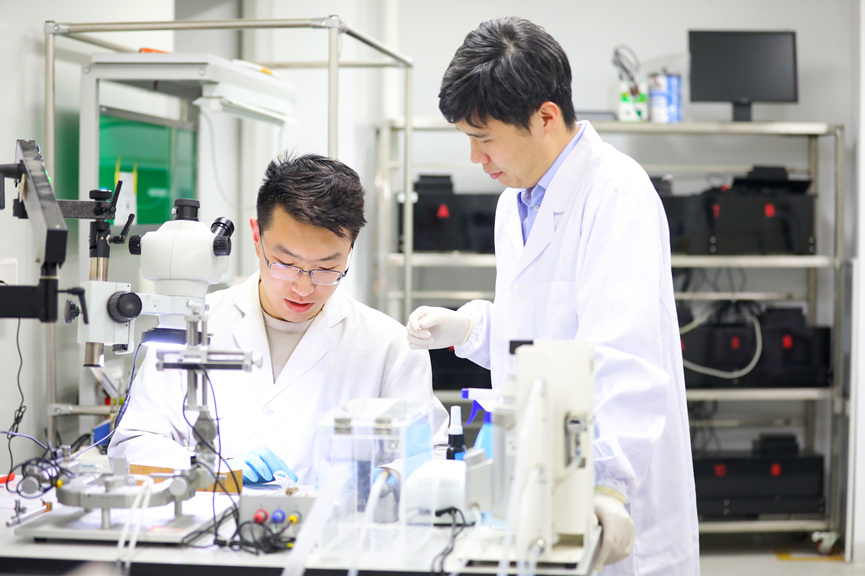
Yi instructs a student in his lab
Teaching as storytelling
Yi, who currently heads the Laboratory of Cognitive Neuroscience at PKUHSC, told me that his supervisor’s 1996 paper “is a must-read” in his own classes, which he characterized as “storytelling” rather than just “presenting” theories or knowledge.
He acquired this teaching style mainly from his supervisor, who used to incorporate one story after another into his teaching. “For instance, how he (O'Keefe) (single-handedly) discovered this theory, how his students discovered this, and how students of his students discovered that ...,” Yi told me, grinning, “It felt like watching a movie. It stunned me (when I was a student) in a way like ‘Wow, classes can be taught this way!’”
“That was why I try to teach as telling a story, rather than relying on the ‘textbook example’ of pedagogy,” added Yi, who acknowledged that he might not be among the best lecturers nationwide but definitely "belongs to the unique kind."
Yi’s teaching style was also molded by his early exposure to online courses. “That was perhaps between 2005 and 2006 when MIT took the initiative to publish lectures on the Internet,” recalled Yi, who then was amazed by the way those prestigious professors taught, “Besides storytelling, they were doing experiments in class, especially for physics classes, where ‘labs’ were brought to the podium to demonstrate how a theorem work.”
“Where does science or scientific knowledge spring from? It's not just somehow figured by scientists in their office; it must derive from practices,” Yi underlined, “That’s why in my teaching, I try to squeeze in as many experiments as I can.”
In the meeting room, Yi demonstrated to me and my colleagues at the PKU News & Media Center how to distinguish between two common types of memories — declarative memory (information) and non-declarative memory (skills) — through a simple but vivid interaction.
"Information is easy to remember: If I say three random numbers, ‘eight, seven, and four,’ you can remember them in just a second," said Yi, who then moved his fingers swiftly and let us mimic his actions. After our stiff response, he explained that “When we try to remember these three numbers ‘physically’, the process becomes super slow."
***
As the interview drew near a close, Yi had one final story to share with us, the tale of empathizing with patients. In the class about Parkinson's disease, Yi would often tell the story of a grandpa.
“With late-stage PD, the grandpa couldn’t stop trembling and was in desperate need of a surgery called ‘deep brain stimulation (DBS).’ However, the problem was that it could cost as much as 200,000 yuan (about 27,500 USD),” said Yi, who would encourage his students to ponder "real-life" dilemmas facing patients instead of only being focused on treatment or techniques.
"We would discuss issues such as ‘Are there any (other) medicines he could take?’ or ‘Is the treatment covered by medical insurance funds?’" "‘How can we help (incurable) patients after treatment ends?’"
*This story is featured in PKU News' "What Makes a Researcher" series.
Interviewed by: Wang Yan, Dennis Meng
Written by: Dennis Meng
Photos by: Liu Yueling
